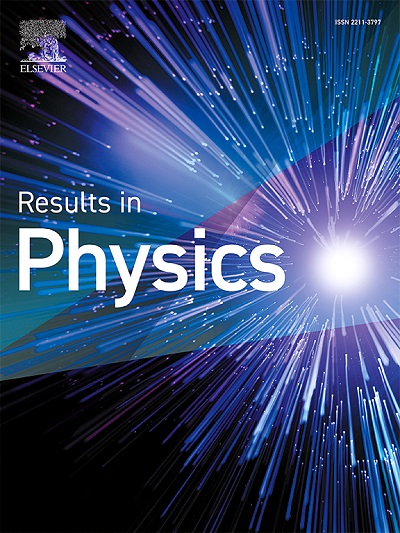Intelligent predictive networks for MHD nanofluid with carbon nanotubes and thermal conductivity along a porous medium
IF 4.4
2区 物理与天体物理
Q2 MATERIALS SCIENCE, MULTIDISCIPLINARY
引用次数: 0
Abstract
Recurrent neural networks have been able to capture the interest of the academia as they are able to compute very complex models which are non linear in nature. It is in this light that recurrent neural networks are well suitable for use in complex areas including fluid dynamics, biological computing, and biotechnology since they are capable of learning patterns. In this study we examine the ability of Levenberg-Marquardt algorithm with recurrent neural networks (LMA-RNNs) in simulating the MHD heat transfer properties of nanofluid consisting of carbon nanotubes model via porous media in terms of thermal conductivity. In the contemporary era SWCNTs and MWCNTs based nanofluids have many applications in drug delivery, cancer treatment, tissues regeneration, mechanical engineering, optical devices, electrically powered devices, and industrial production, particularly in solar thermal systems where heat transfer performance can boost energy capture and storage efficiency. The data used in this study is collected using Adams numerical technique and is then fine-tuned using the LMA-RNNs. The LMA-RNNs is performed with 80% of data to train the model and another 10% is used to test the model and the left over 10% is used for validation. In terms of plots for SWCNTs and MWCNTs further information is provided regarding the impacts of critical physical aspects on the field of velocity and temperature, and from the results presented in this article it is observed that an increase in suction parameter leads to a decrease in velocity and temperature profiles. It is found that increase in the form of higher Eckert number, it can come to an abstraction that the temperature profile increases as well. Furthermore, it is noticed that higher Pr values lead to lower values of thermal diffusivity, which mean that the thermal layer is thinner, or that there is less diffusivity of heat. For the assessment of the performance of the applied LMA-RNNs, the fitness of mean squared error, regression plots and error distribution in histograms is presented. The reduced MSE reveals that predictions of model are less likely to deviate from the true values and are more accurate this validates the proposed approach.
求助全文
约1分钟内获得全文
求助全文
来源期刊

Results in Physics
MATERIALS SCIENCE, MULTIDISCIPLINARYPHYSIC-PHYSICS, MULTIDISCIPLINARY
CiteScore
8.70
自引率
9.40%
发文量
754
审稿时长
50 days
期刊介绍:
Results in Physics is an open access journal offering authors the opportunity to publish in all fundamental and interdisciplinary areas of physics, materials science, and applied physics. Papers of a theoretical, computational, and experimental nature are all welcome. Results in Physics accepts papers that are scientifically sound, technically correct and provide valuable new knowledge to the physics community. Topics such as three-dimensional flow and magnetohydrodynamics are not within the scope of Results in Physics.
Results in Physics welcomes three types of papers:
1. Full research papers
2. Microarticles: very short papers, no longer than two pages. They may consist of a single, but well-described piece of information, such as:
- Data and/or a plot plus a description
- Description of a new method or instrumentation
- Negative results
- Concept or design study
3. Letters to the Editor: Letters discussing a recent article published in Results in Physics are welcome. These are objective, constructive, or educational critiques of papers published in Results in Physics. Accepted letters will be sent to the author of the original paper for a response. Each letter and response is published together. Letters should be received within 8 weeks of the article''s publication. They should not exceed 750 words of text and 10 references.
 求助内容:
求助内容: 应助结果提醒方式:
应助结果提醒方式:


